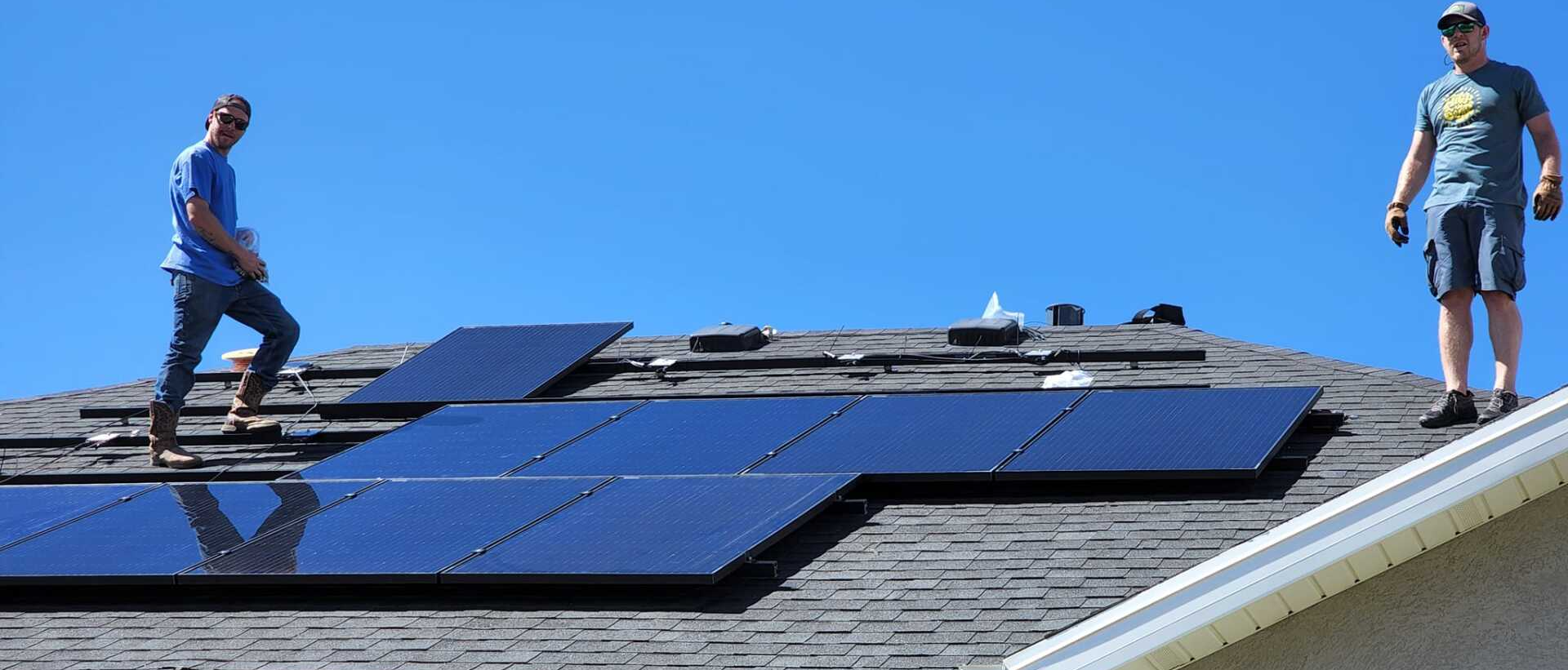Homeowners and business owners who install solar are eligible for the federal solar tax credit

which can mean large savings and financial advantages when transitioning to clean solar power! The federal solar tax credit, also known as the investment tax credit (ITC), allows you to deduct 30% of the cost of installing a solar energy system from your federal taxes.
The 30% tax credit will be available until the end of 2032. The key takeaways are:
- The federal tax credit allows both homeowners and businesses to claim 30% of their solar system costs from their taxes, with no cap.
- The tax credit can be used for battery storage and EV chargers, with certain caps. It will be applicable to heat pumps and heat pump water heaters starting in 2023.
- The 30% tax credit will last for 10 years until the end of 2032, at which point it will drop to 26%.
- The credit rolls over, so you don’t have to have enough tax liability to use it all in one year.
We cover the federal tax credits in greater depth below, for residential, commercial, and non-taxpayer entities. Our solar experts at ReVision Energy are happy to discuss these details with you as your embark on your solar journey!
Disclaimer: This for educational use only, we are not tax professionals and are not offering tax advice. We recommend all solar customers consult with a tax counsel.
Residential Federal Solar Tax Credit
The federal solar tax credit, allows you to deduct 30% of the cost of installing a solar energy system from your federal taxes. This will be available until the end of 2032, at which point it will drop to 26%.The credit can also be carried forward to future tax years if you cannot take the full credit in the year the system was installed.
With the passing of the Inflation Reduction Act Bill in August 2022, the Solar Tax Credit (renamed to the Renewable Clean Energy Tax Credit) received a 10-year extension of 30%. That means customers installing solar in 2022 will now receive the full 30% when they file their 2022 taxes!
Residential Credit for Home Energy Products
The 30% solar tax credit covers installation of solar complimentary technology, including battery storage and EV charging infrastructure, up to certain amounts.
Starting in 2023, home energy upgrades, such as heat pumps and hot water heaters, also qualify for a tax credit, thanks to the new Energy Efficient Home Improvement credit. You will be able to deduct 30% of the costs for buying and installing heat pumps and heat pump water heaters, up to $2,000. The Energy Efficient Home Improvement credit also covers insulation and the breaker boxes to accommodate additional electric load, up to $1,200.
Starting in 2023, there will also be a tax credit available for stand-alone battery storage with no cap, opening up options to use storage more flexibly.
More information:
- A homeowner claims the 30% credit on IRS 5695, Residential Energy Credits (PDF)
- TurboTax has detailed information on the Residential Solar Tax Credit
- Also, see DSIRE – Residential Renewable Energy Tax Credit

Solar Tax Credit FAQS:
How does the solar tax credit work?
When you utilize the 30% credit on your solar project, the ITC amount is applied against your tax liability, or the money you owe the IRS. As long as you own your solar power system, you are eligible for the solar investment tax credit. However, if you sign a lease or power purchase agreement (PPA) with a solar installer, you are not the owner of the system, and therefore cannot claim the tax credit. It’s important to note that there is no income limit on the federal solar tax credit program, so taxpayers in all income brackets may be eligible.
You claim the investment tax credit for solar when you file your yearly federal tax return.
What is covered by the tax credit?
For homeowners who utilize the 30% ITC, you can cover the following:
- The cost of your solar panels
- The labor costs for installation, including permitting fees, inspection costs, and developer fees
- Any additional solar equipment, like inverters, wiring, and mounting hardware
- Solar batteries charged by your system (stand alone battery storage will be covered starting in 2023)
Can the solar tax credit be used in combination with other incentives?
In general, you should be able to combine savings from the ITC with other incentives. Depending on which state you live in, there are several other solar incentives available, like rebates, state-sponsored programs, and other tax credits. Check out our state specific solar guides to learn about incentives in your state:
Why is the solar tax credit important?
To achieve the rigorous and necessary renewable energy benchmarks needed to slow the climate crisis, the US has heightened the federal policies and incentives to help deploy clean energy technology. While access to solar remains an obstacle for certain disadvantaged communities, solar deployment has increased rapidly across the country, on both a residential and utility-scale level. The federal tax credit has given businesses, homeowners, and tax payers the opportunity to take advantage of decreased solar costs while increasing long-term energy stability. This allows companies like us to utilize resources and funding to growing solar access equitably across our communities.
Blog Credit -
Revision Energy




